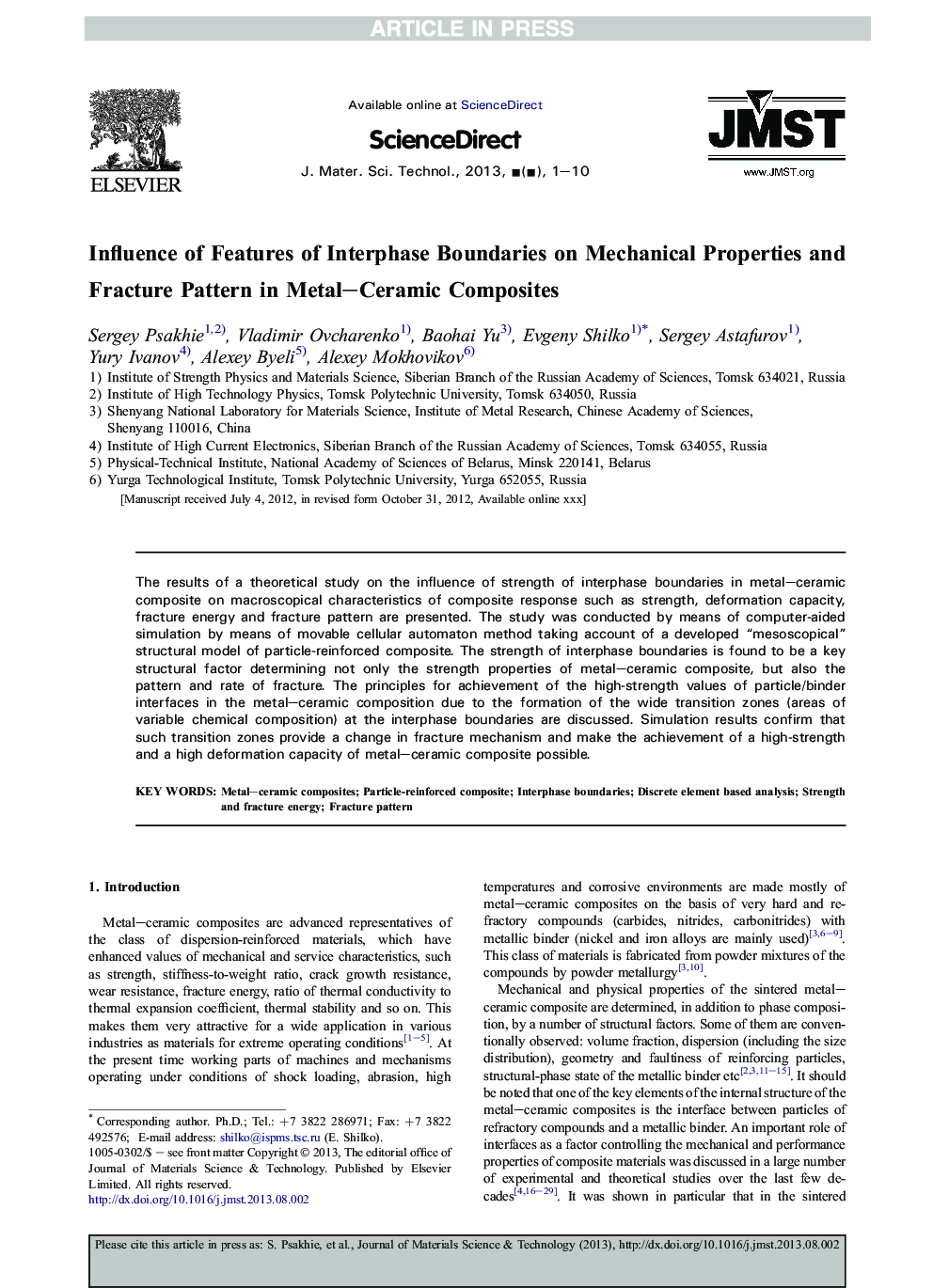| Article ID | Journal | Published Year | Pages | File Type |
|---|---|---|---|---|
| 1556739 | Journal of Materials Science & Technology | 2013 | 10 Pages |
Abstract
The results of a theoretical study on the influence of strength of interphase boundaries in metal-ceramic composite on macroscopical characteristics of composite response such as strength, deformation capacity, fracture energy and fracture pattern are presented. The study was conducted by means of computer-aided simulation by means of movable cellular automaton method taking account of a developed “mesoscopical” structural model of particle-reinforced composite. The strength of interphase boundaries is found to be a key structural factor determining not only the strength properties of metal-ceramic composite, but also the pattern and rate of fracture. The principles for achievement of the high-strength values of particle/binder interfaces in the metal-ceramic composition due to the formation of the wide transition zones (areas of variable chemical composition) at the interphase boundaries are discussed. Simulation results confirm that such transition zones provide a change in fracture mechanism and make the achievement of a high-strength and a high deformation capacity of metal-ceramic composite possible.
Related Topics
Physical Sciences and Engineering
Materials Science
Materials Chemistry
Authors
Sergey Psakhie, Vladimir Ovcharenko, Baohai Yu, Evgeny Shilko, Sergey Astafurov, Yury Ivanov, Alexey Byeli, Alexey Mokhovikov,
